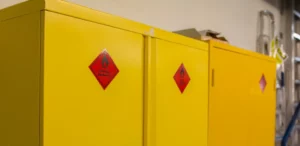When it comes to workplace safety in New Zealand, nothing is more crucial than adhering to the Health and Safety at Work Act 2015 and its associated regulations. Among the regulations included in this legislation, the need for Personal Protective Equipment (PPE) stands out as essential. This article offers a comprehensive exploration of the different types of Personal Protective Equipment and the requirements under the Health and Safety at Work Act 2015 in New Zealand.
What is Personal Protective Equipment (PPE)?
Personal Protective Equipment, commonly abbreviated as PPE, refers to clothing or equipment designed to protect workers from health or safety hazards at work. These hazards could range from dangerous chemicals, airborne particulates, infectious diseases, physical impacts to heat, cold, noise, and more.
Types of Personal Protective Equipment (PPE)
- Head and Face Protection: Helmets, face shields, and safety glasses are designed to protect workers from impacts, dust, splashes, and radiation. These are essential in industries like construction, mining, and certain manufacturing sectors.
- Hearing Protection: Noise-induced hearing loss is a significant occupational hazard. Earplugs or earmuffs can be used to reduce the exposure to harmful noise levels in environments like manufacturing plants, airports, or construction sites.
- Respiratory Protection: Respiratory Protective Equipment (RPE), like dust masks or respirators, protect users from inhaling hazardous substances, dust, fumes, gases, or vapours. These are crucial in industries such as painting, asbestos removal, or healthcare.
- Hand and Arm Protection: Gloves and arm coverings are designed to shield workers from a variety of hazards like chemicals, cuts, burns, electrical risks, and more. Industries like healthcare, cleaning, food processing, and chemical industries frequently require these.
- Foot and Leg Protection: Safety shoes, boots, and leg coverings protect workers from hazards like falling objects, chemicals, or electric shocks. These are often required in industries such as construction, manufacturing, and agriculture.
- Body Protection: Depending on the risk involved, workers may require body protection ranging from high-visibility clothing, lab coats, aprons to full-body suits. These are vital across various industries, including road work, laboratories, and chemical processing.
The Health and Safety at Work Act 2015 and PPE
The Health and Safety at Work Act 2015 in New Zealand mandates businesses to ensure a safe work environment for their employees. One of the key stipulations involves the appropriate use of Personal Protective Equipment.
Under this Act, employers are required to:
- Identify hazards: Businesses must first identify potential risks in their workplace and determine if PPE is necessary to mitigate these hazards.
- Provide PPE: If the risk cannot be controlled by other means, employers must provide suitable PPE to their employees. It’s crucial that the provided equipment is fit for purpose, maintained correctly, and used appropriately.
- Train employees: Employers must ensure their workers understand why they need PPE, when to use it, and how to use it correctly. Proper training and instruction are fundamental for effective use of PPE.
- Consult workers: Businesses should involve their employees in decisions about PPE, taking into consideration factors like comfort, fit, and suitability for the task at hand.
- Review and update practices: Regular reviews should be undertaken to ensure that the provided PPE remains appropriate and effective in the face of changing work conditions or updated standards.
Personal Protective Equipment plays a vital role in adhering to the Health and Safety at Work Act 2015. Understanding the different types of PPE and when and how they should be used is crucial in reducing workplace accidents and ensuring the well-being of employees.
By keeping these factors in mind, employers in New Zealand can ensure that their workplaces remain safe, productive, and compliant with the necessary regulations. Remember, a safe worker is a happy and productive worker!
Click on the link below to browse a comprehensive catalog of PPE:

